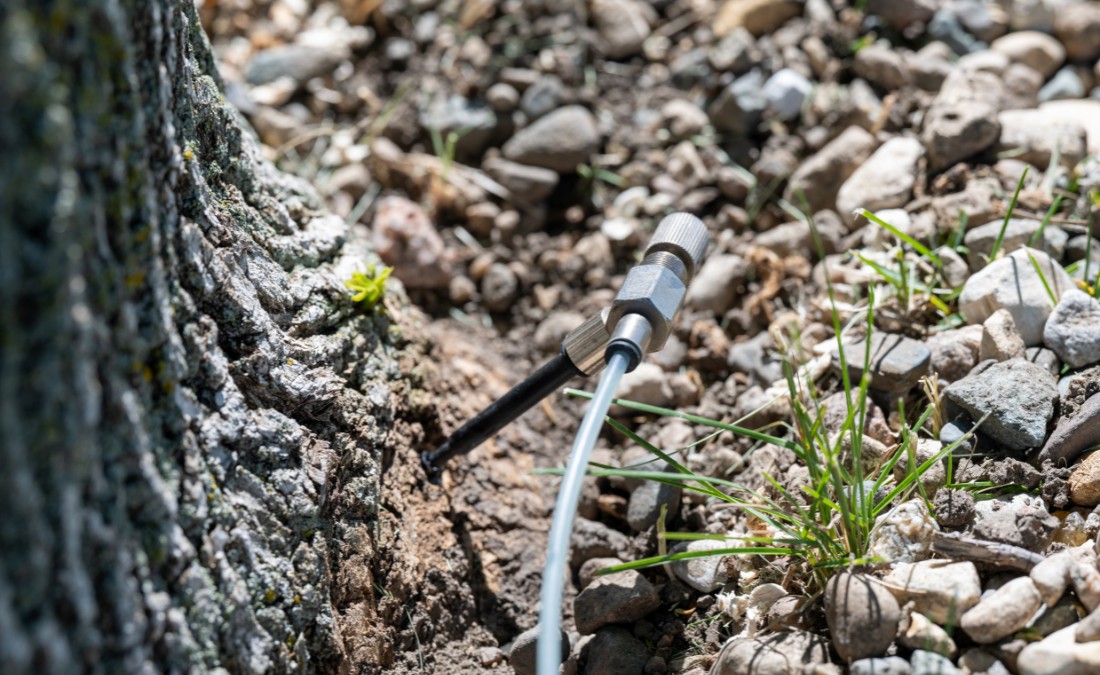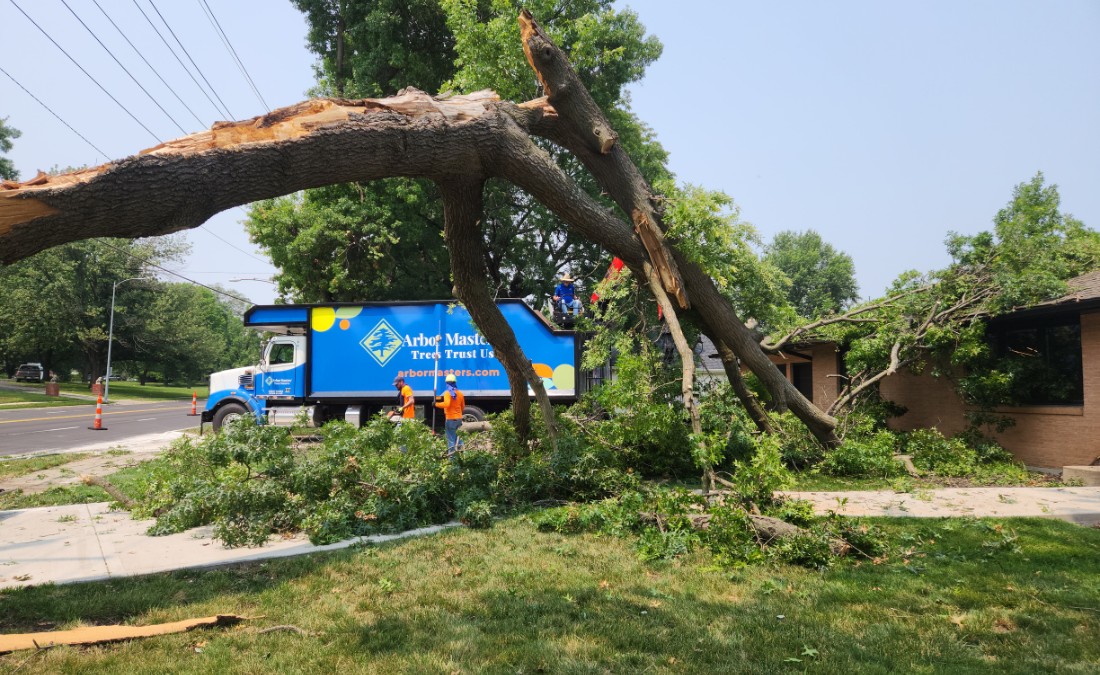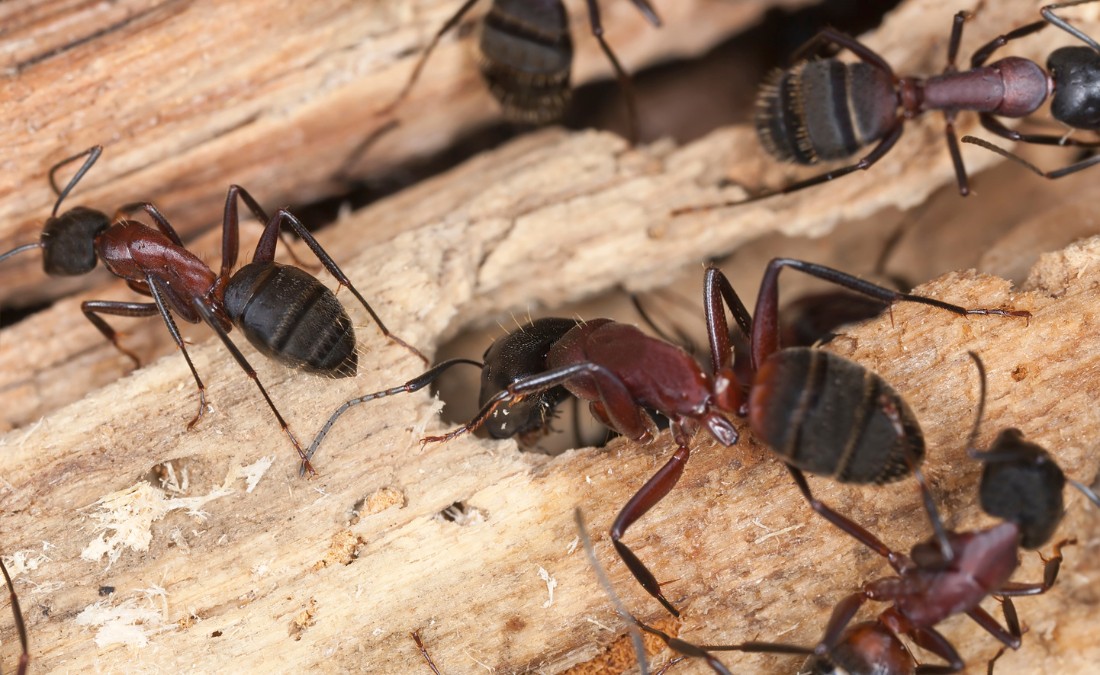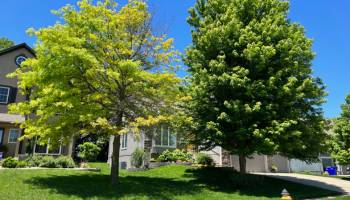The Best Time to Prune Different Tree Species in Fort Worth, TX

Knowing what to prune in each season is vital to protecting your trees. Arbor Masters explains the benefits of pruning in each season in Fort Worth.
Pruning is one of the best ways to support the health of your trees, but only when done right. Pruning the wrong tree species in the wrong season can stress your trees. In this article, we’ll explain what trees to prune in Fort Worth during each season, so you can keep your trees healthy and thriving.
Key Takeaways
- When and what to prune changes depending on the season.
- Winter is the best season for significant pruning of most deciduous trees in Fort Worth.
- Save pruning of spring-flowering ornamentals until after they bloom in the spring.
- Summer is a great time to trim your evergreen trees and reshape them.
- Fall pruning should only target deadwood to avoid encouraging too much new growth before winter sets in.
The Best Time to Prune Trees in Fort Worth
Correctly timing your tree pruning is just as important as actually pruning them. Mistiming pruning can do more harm than good for your trees.
Different tree species may require different timing. Additionally, different seasons provide various benefits to your trees.

Winter is the Best Time to Prune Most Deciduous Tree Species
If you’ve spoken with anyone in the arboriculture industry, they’ve probably told you winter is the best time for pruning. And they’re right, in most instances. Winter is the best time to prune most deciduous trees (trees that lose their leaves in the winter).
In the winter, trees will enter dormancy. Dormant pruning has several benefits for most deciduous trees in Fort Worth, such as:
- Less stress on trees: Pruning causes stress to trees. But performing the service in the winter limits stress and gives trees time to heal before the new growing season.
- Less risk of spreading diseases: Most tree pests and diseases are inactive in the winter. Pruning opens up wounds that can be entry points for insects or diseases. By pruning in the winter, you minimize the risk of pest or disease problems. This is especially vital with oak trees. Oak wilt is a significant concern for oaks and can quickly kill them, which is why many states regulate when you can prune oaks.
- Protect yourself from hazards: In years where we have heavy snow or wind, weak branches can snap off and cause damage to anything below. Removing these branches in late fall or early winter can help protect your home and family.
- Easier time identifying a tree’s structure: An arborist can better understand a tree’s structure with no leaves. We can make more informed decisions about which branches to remove in the winter.
Some Fort Worth tree species to prune this winter include:
- Oak
- Sycamore
- Ash
- Elm
- Crape myrtle
- Desert willow
Spring Pruning Should Focus on Ornamentals
While winter is excellent for most deciduous trees, there is a group to avoid pruning in the winter. This group is spring-flowering ornamentals. These trees provide beauty to your yard in the spring, but not if you prune them in the winter.
Winter pruning these trees will remove the buds and result in a poor showing in the spring. Instead, wait until after the flowers begin to fade to prune spring-flowering ornamentals. Pruning your ornamentals can lead to better flowering next year and an even more attractive yard.
Some species we recommend pruning this spring after they finish their beautiful show include:
- Anacacho orchid tree
- Eastern dogwood
- Mexican buckeye
- Redbud
- Texas mountain laurel
- Saucer magnolia
- Roughleaf dogwood

Summer Is the Time to Prune Many Evergreen Species
Summer is often a season when many of us pay a lot of attention to our trees. However, summer pruning should be selective, as you don’t want to cause even more stress to a tree during an already stressful season. In the summer, trees are dealing with heat stress, drought stress, and insects and disease problems. Coniferous trees (evergreens) are the real target in the Fort Worth summers. Prune your evergreens to allow them to maintain their shape. Also, check for any deadwood or damaged branches to remove.
Some evergreen species we recommend pruning this summer include:
- Magnolia
- Eastern red cedar
- Bluewood
- Arizona Cypress
Ensure you do all your pruning in the early and mid-summer. Waiting too long can bring you too close to fall and put your trees at risk.
Keep Fall Pruning to a Minimum for All Species
Fall is the one season you’ll want to avoid doing most pruning. Why should you put away your loppers? The answer is stress.
Pruning will stress your trees. In response to the stress, your trees will put out new growth to try and recover. In the spring, this is no big deal. The new growth will have time to establish itself before winter. The fall is a different story.
The new growth in the fall will not have time to establish itself and likely die in the winter. This will stress the tree and waste its energy. And trees need all the energy they can get to prepare for dormancy.
That’s not to say there’s no reason to prune in the fall. Fall pruning is vital for removing dead, diseased, or broken branches. These branches likely won’t survive the winter and can be a safety hazard. Have a professional remove deadwood as soon as possible.

Arbor Masters Can Help Prune Your Fort Worth Trees
Pruning is a year-round service. Different seasons are perfect for different trees and goals. We hope this guide gives you an idea of what to focus on throughout the year. If you aren’t sure what or when to prune, consult an ISA Certified Arborist.
Our team at Arbor Masters can help with all your pruning needs. We can examine your trees and prune them following all industry standards. Ensure you have healthy trees with our pruning services. Call us today at 469-586-5829 or request a quote online to schedule your pruning.

Want More Like This?
Get the latest local news, tree care tips, special offers, and company updates directly to your inbox! It's easy to subscribe and there's no spam - we promise.
"*" indicates required fields





